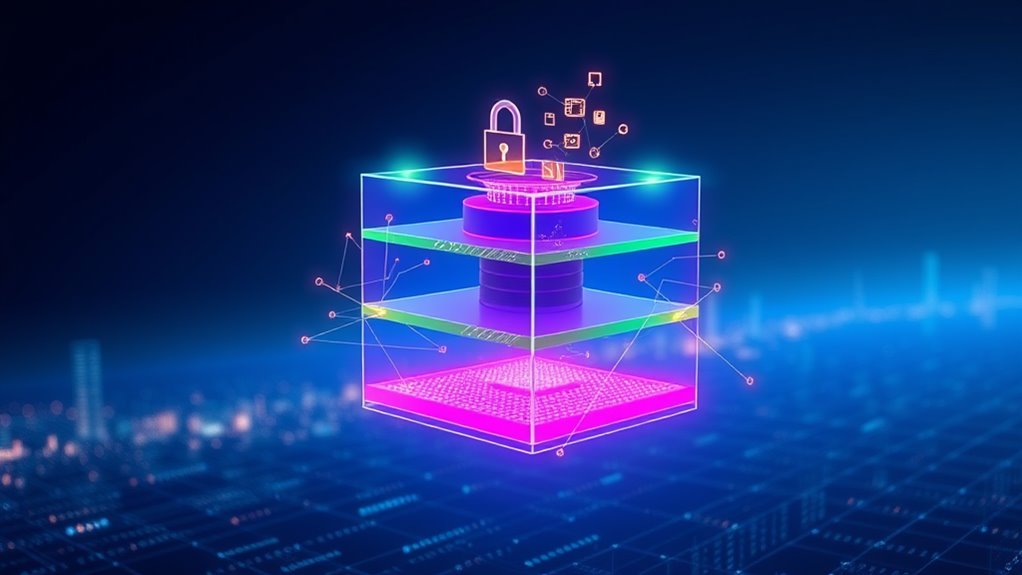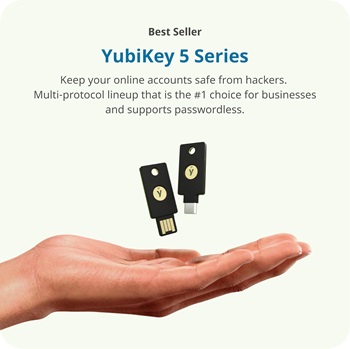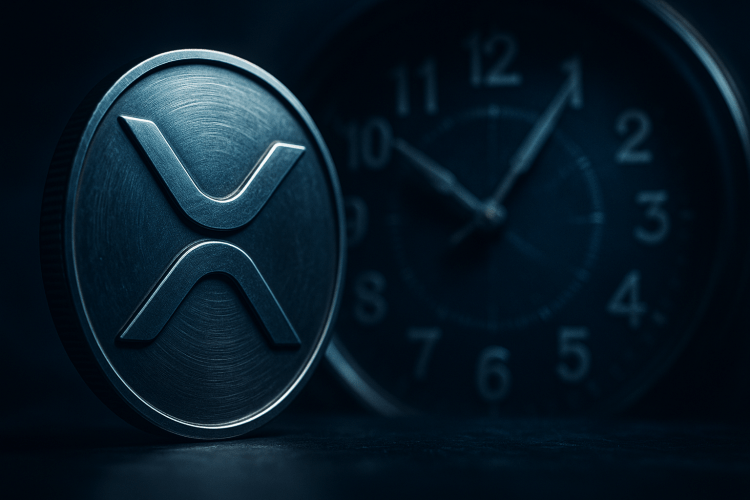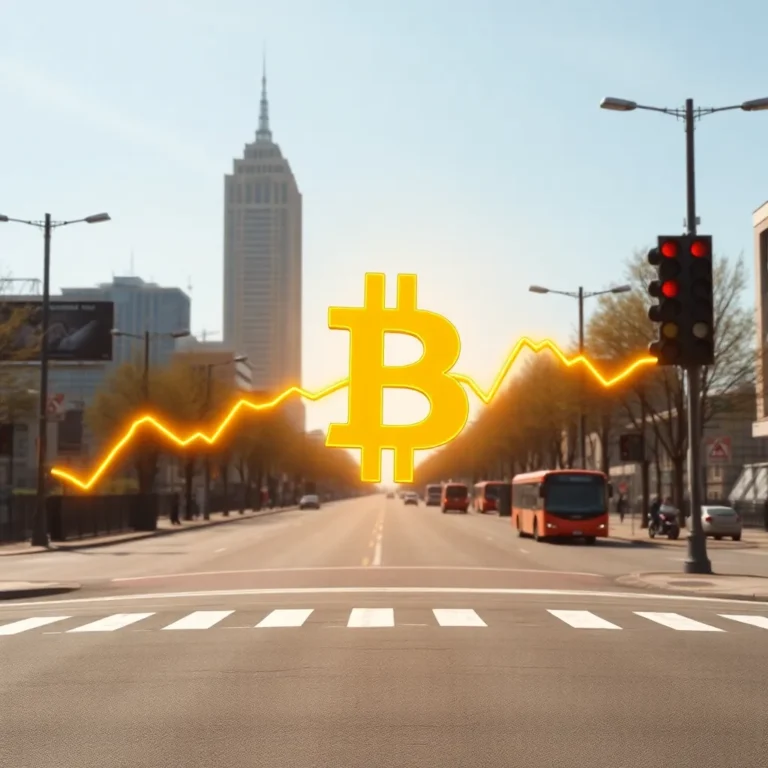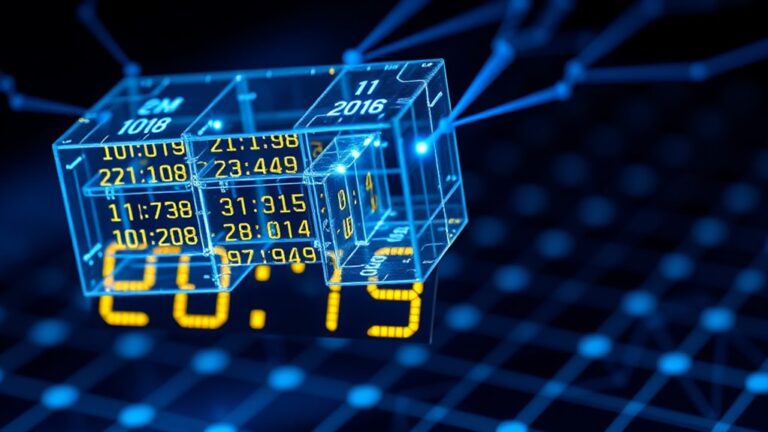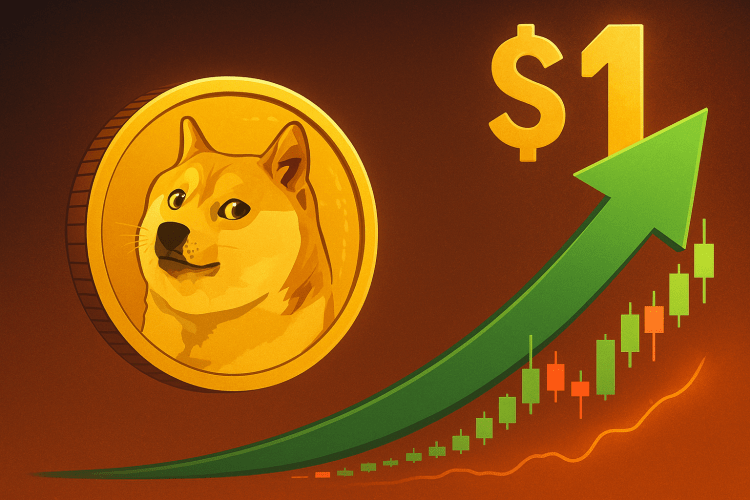What Is a Layer 4 Blockchain?
Note: This post may contain affiliate links, and we may earn a commission (with No additional cost for you) if you make a purchase via our link. See our disclosure for more info. The crypto world is constantly changing. This content is for informational purposes only and not financial, legal, or professional advice So, please verify the info on the cryptocurrency provider’s websites.
Layer 4 blockchain? It's basically the application layer where all the fun stuff happens—think smart contracts and dApps. This is where users actually interact with the blockchain, not just stare at it. It features DeFi, NFTs, and even gaming worlds. But don't be fooled; it has its issues with scalability and user adoption. It needs the lower layers for security and efficiency. Want to know how it all connects? Stick around.
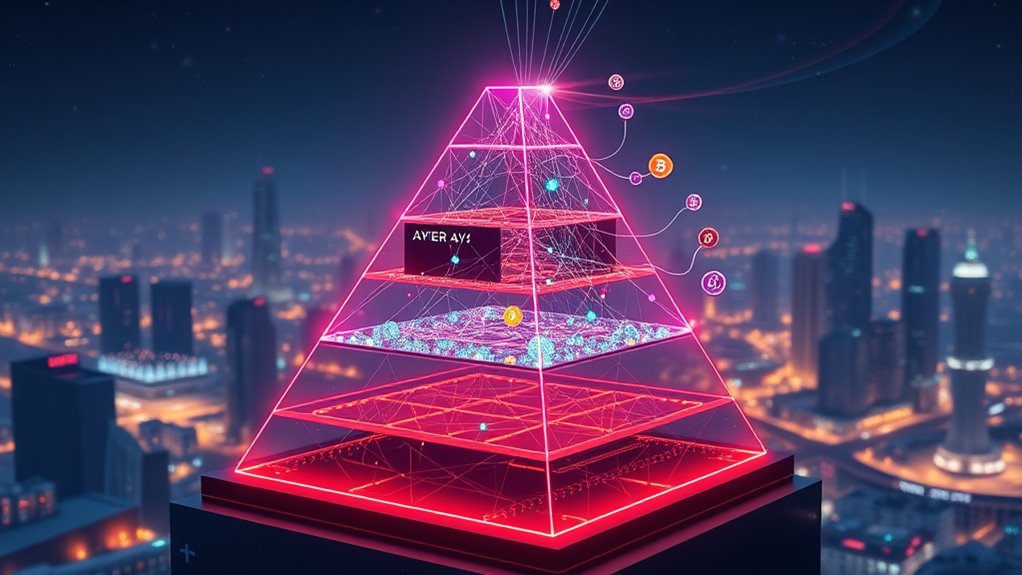
Layer 4 blockchain—what's the deal? It's where the magic happens, folks. Think of it as the application layer, the place where smart contracts and decentralized applications (dApps) hang out. It's all about user interaction. You want to use blockchain? This is your starting line.
Layer 4 blockchain is the lively app layer where smart contracts and dApps thrive, sparking user interaction like never before!
So, what's in this Layer 4 treasure chest? Smart contracts, those nifty little robots that execute code when conditions are met. DApps? They're the cool kids that let users actually do something on the blockchain. Imagine DeFi platforms, NFTs that make you feel like a digital Picasso, and even gaming worlds that suck you in for hours. This is Layer 4's playground, and it's got a lot going on.
Now, here's where it gets a bit murky. Different frameworks can't seem to agree on which layer does what. Some say Layer 3 is where the apps live. Others swear Layer 4 is the real deal. It's like choosing a favorite child—everyone has an opinion. But for our purposes, let's roll with Layer 4 as the app layer. It's where blockchain meets the everyday user. Unlike Layer 3 blockchains that focus on application-specific solutions to enhance scalability and interoperability, Layer 4 is more concerned with user interface and direct interaction.
Interoperability? Yes, please! Layer 4 can chat with Layers 0 and 1 for cross-chain action. That means your tokens can hop from one blockchain to another. Sounds snazzy, right? But hold your horses. Security isn't a solo act; Layer 4 leans heavily on the layers beneath it for safety and scalability. Without them, it's like building a house on quicksand. Additionally, Layer 4 relies on consensus mechanisms to ensure that transaction validity is maintained throughout the network. Each layer contributes to the overall functionality and security of the blockchain system.
Still, not everything is sunshine and rainbows. Scalability issues are lurking. User adoption? A bit sluggish. Many are calling for Layer 2 solutions to step in and save the day. The world of Layer 4 might be vibrant, but it's got its challenges. It's a wild ride through a tech jungle. Buckle up!
Frequently Asked Questions
How Does a Layer 4 Blockchain Differ From Layer 1 and Layer 2?
Layer 4 blockchains are all about user interaction.
They differ from Layer 1, the foundational blockchain, and Layer 2, which scales things up.
Think of Layer 1 as the skeleton, sturdy but lifeless. Layer 2 adds some muscle, enabling faster transactions.
Layer 4? That's the flashy interface where users actually engage.
It doesn't handle security like Layer 1 or scalability like Layer 2.
It's all about making blockchain accessible and user-friendly.
What Are the Real-World Applications of Layer 4 Blockchains?
Layer 4 blockchain applications are all about usability.
Think wallets like MetaMask and Coinbase Wallet—easy access to your crypto. APIs? Infura and Alchemy make life simpler for developers.
Then there are user dashboards, tracking your assets like a hawk. Don't forget block explorers like Etherscan, letting you peek into every transaction.
Can Layer 4 Blockchains Interact With Existing Layer 1 and Layer 2 Solutions?
Layer 4 blockchains? Sure, they can interact with Layer 1 and Layer 2 solutions.
But here's the kicker: it might not be direct. Think of it like a game of telephone. Layer 4, often viewed as the user interface, talks to Layer 3, which then chats with Layers 1 and 2.
Are There Any Notable Projects Currently Using Layer 4 Blockchain Technology?
Layer 4 projects are all about making blockchain easier for regular folks.
Think wallets like MetaMask and Coinbase Wallet—super user-friendly. Etherscan? It's your go-to for tracking transactions. Ledger keeps your crypto safe offline. Trust Wallet? It's a favorite for mobile users.
These tools act as bridges, turning tech jargon into something anyone can understand. They help people immerse themselves in decentralized apps without needing a tech degree. Simple, right?
What Are the Potential Challenges of Implementing Layer 4 Blockchains?
Implementing new tech is never a walk in the park. Layer 4 blockchains face a slew of challenges.
First, interfaces can be confusing—good luck getting non-techies onboard with that.
Then there are security worries. Who wants to trust their digital wallet with their life savings?
Plus, there's a mishmash of protocols leading to incompatibility. It's like trying to fit a square peg in a round hole. Good luck with that integration!

